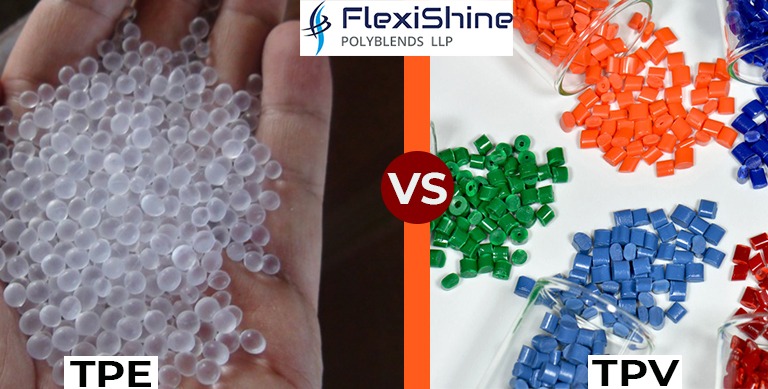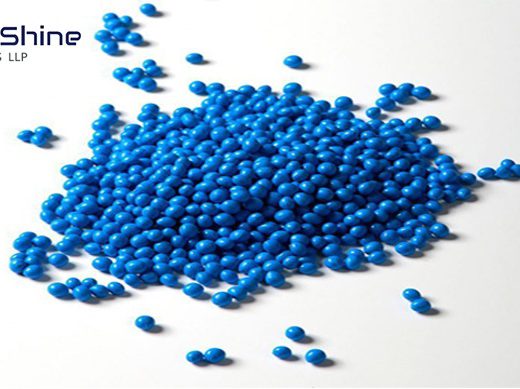The main difference between TPE and TPV is –
Thermoplastic elastomers (TPEs) are a diverse family of rubber-like materials that, unlike conventional vulcanized rubbers, can be processed and recycled like thermoplastic materials where as
Thermoplastic vulcanizates, or TPV, constitute another approach to creating thermoplastic elastomer materials. TPVs are created by dynamically cross-linking a rubber while dispersing it in a rigid design through reactive extrusion.
Difference on the basis of material qualities
TPE (Thermoplastic Elastomer)
The material is basically a mix of thermoplastic elastic (tpe) and other assistant materials.
Material qualities
(1) It is non-harmful and harmless to the ecosystem, doesn’t contain cancer-causing substances like nitrite and weighty metals, and can be reused to accomplish food sterilization principles.
(2) Good maturing opposition.
(3) Small changes in hardness in fluctuated temperatures: material temperature range is – 30 ºC ~ 80ºC. At temperature scope of – 20 ºC ~ 40ºC, the Shore hardness is under 4A, which is superior to that of customary PVC and EPDM materials.
(4) High tearing strength.
TPV (Thermoplastic Vulcanizate) is a steady elastomer by mixing EPDM + progressively vulcanized PP.
Material qualities:
(1) It is non-harmful and harmless to the ecosystem, doesn’t contain cancer-causing substances like nitrite and weighty metals, and can be reused to accomplish sterilization principles to adjust to SGS certificate and EU ROHS standards.
(2) Good maturing opposition.
(3) Small changes in hardness in fluctuated temperatures: material temperature range is – 30 ºC ~ 120ºC. At temperature scope of – 20 ºC ~ 40ºC, the Shore hardness is under 5A, which is superior to that of customary PVC and EPDM materials.
Do you understand the difference between TPV and TPE thermoplastic elastomers?
TPE-V
Vulcanized thermoplastics (TPVs) are a progression of superior execution elastomers that join the beneficial qualities of vulcanized elastic, like adaptability and low pressure, without any difficulty of handling thermoplastics. Its remarkable blend of material properties and simplicity of handling permit the maker to accomplish both basic goals, for example, low creation costs, reliable quality and further developed creation execution. TPV has an ecological obstruction tantamount to the EPDM elastic compound, while the liquid opposition is equivalent to that of the polychloroprene elastic mixtures. The pieces made of TPV offer a scope of steady assistance temperature from – 60 ÷ 135ºC without breaking or tenacity. Superb intensity maturing consolidates with protection from oils and lubes for uncommon solidness. TPV has superb protection from abbreviate development while being adaptable, high thickness and great weariness opposition, and great protection from numerous acids and base and fluid arrangements.
SBS is a thermoplastic elastomer, is a sort of styrene block copolymers (SBC), with attributes of plastic and elastic, known as the “third era of manufactured elastic”. SBS is the contraction in English of Styrene-Butadiene – Styrene (styrene-butadiene-styrene), since said copolymer is comprised by a short polystyrene chain, trailed by another long polybutadiene chain lastly by another short polystyrene chain.
The SBR (styrene-butadiene elastic) is an arbitrary copolymer of butadiene and styrene, and the two monomers are arbitrarily conveyed in the principal chain, in which the mass level of styrene is 23.5% ~ 25%.
However, they have a few comparable qualities: contact with water/frail corrosive/salt, with amazing elasticity, coefficient of surface erosion.
The SBS butadiene square can be hydrogenated to give one more delicate square, with a construction that is near the arbitrary ethylene-butylene copolymers. The square copolymer subsequently framed is called SEBS. It has a higher warm soundness than SBS on account of the end of the twofold obligations of the elastic square. SEBS: SBS which has gone through a hydrogenation cycle, through which the foundation of the polybutadiene chain is dispensed with. This new elastic has a high protection from the climate, temperature, UV (bright) radiation, and so on without losing the properties of a thermoplastic, making them exceptionally valuable in applications where an ordinary SBS isn’t reasonable.
Sister: Styrene-isoprene-styrene block copolymer. Its trademark thermoplastic, high flexibility and low liquefying temperature and consistency make the SIS well known among the fields of cements, plastic change, utilized primarily to create plastic sacks to stack, ladies’ wipes, paper diapers, twofold strips face and names impervious to oil.
The SIS butadiene square can be hydrogenated to give one more delicate square, with a design that is near the irregular ethylene-butylene copolymers. The square copolymer hence shaped is called SEPS. It has a higher warm soundness than SIS. The SEPS structure creates high extension properties as well as further developed low temperature properties without crystallization. SEPS: SIS that has gone through a course of hydrogenation, through which the foundation of the polybutadiene chain is killed. This new elastic has a high protection from the climate, temperature, UV (bright) radiation, and so forth without losing the properties of a thermoplastic, making them extremely helpful in applications where a typical SIS isn’t appropriate.
We are one of the leading TPE, TPV, TPS, TPO, TPR, manufacturers in Ahmedabad, Gujrat, India. And being the top leader of the industry, we timely latest update about the various kind of polymers to provide correct knowledge to our readers and customers through our blog
Get in touch
Flexishine Polyblends LLP
Tal,Kalol, Gandhi Nagar – 382721
+91 93774 82340



